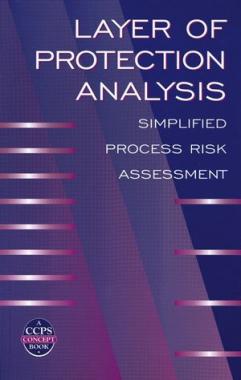ISBN
Pages
Layer of protection analysis (LOPA) is a recently developed, simplified method of risk assessment that provides the much-needed middle ground between a qualitative process hazard analysis and a traditional, expensive quantitative risk analysis. Beginning with an identified accident scenario, LOPA uses simplifying rules to evaluate initiating event frequency, independent layers of protection, and consequences to provide an order-of-magnitude estimate of risk. LOPA has also proven an excellent approach for determining the safety integrity level necessary for an instrumented safety system, an approach endorsed in instrument standards, such as ISA S84 and IEC 61511. Written by industry experts in LOPA, this pioneering book provides all the necessary information to undertake and complete a Layer of Protection Analysis during any stage in a processes' life cycle. Loaded with tables, charts, and examples, this book is invaluable to technical experts involved with ensuring the safety of a process. Because of its simplified, quicker risk assessment approach, LOPA is destined to become a widely used technique. Join other major companies and start your LOPA efforts now by purchasing this book.
Errata
Page 96 table 6.4 - Incorrect signs in table, please use the corrected version here
Page 128, Equation 7-1 1: Term [SYMBOL FOR INITIATING EVENT FREQUENCY] should be included before x Pignition

